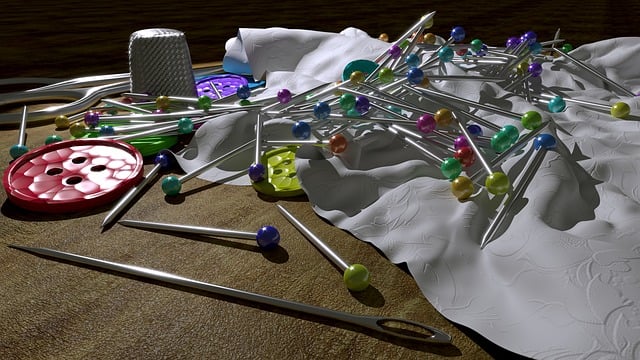Clash detection between architectural plans and rebar shop drawings is a critical MEP coordination task ensuring structural integrity and seamless system integration. Early collaboration using advanced software visualizes the building model, enabling efficient conflict resolution and minimizing costly on-site modifications. Rebar shop drawings facilitate precise analysis and identify potential conflicts before construction begins, promoting effective communication among architects, engineers, and contractors. Effective clash detection software, utilizing rebar shop drawings and construction documents, visually identifies conflicts early in the design process, minimizing delays and enhancing project quality through collaborative resolution. Advanced digital platforms leveraging AI automate this process, saving time, reducing revisions, facilitating workflows, and accelerating project completion by identifying potential MEP-architectural clashes proactively.
In the complex landscape of construction, clash detection and coordination between MEP (Mechanical, Electrical, Plumbing) systems and architecture are non-negotiable. This comprehensive guide delves into the critical aspects of ensuring harmonious integration. From understanding the unique perspectives of MEP and architectural professionals to leveraging digital solutions, we explore strategies for identifying and resolving clashes efficiently. A key focus is the role of rebar shop drawings as a crucial tool for coordination, enhancing project accuracy and streamlining construction processes.
Understanding Clash Detection: The MEP and Architectural Perspective
Clash detection is a critical process in construction, ensuring that mechanical, electrical, and plumbing (MEP) systems coordinate seamlessly with architectural elements. From the perspective of MEP professionals, clash detection involves identifying potential conflicts between rebar shop drawings and architectural plans. Rebar, an essential component in structural integrity, often requires precise placement and spacing, which can intersect with MEP runs, creating design challenges.
Architects and MEP coordinators must work together to resolve these clashes early in the design phase. By utilizing advanced software tools, they can visualize the entire building model, enabling efficient detection and resolution of conflicts. This collaborative approach ensures that the final construction incorporates all systems harmoniously, avoiding costly on-site modifications and delays.
Rebar Shop Drawings: A Crucial Tool for Coordination
Rebar shop drawings play a pivotal role in ensuring seamless clash detection and coordination among Mechanical, Electrical, Plumbing (MEP) systems and architectural elements. These detailed illustrations serve as a fundamental tool for construction professionals to visualize and plan complex structural interactions. By creating precise representations of rebar layouts, shop drawings enable thorough analysis and identification of potential conflicts before the actual construction phase.
In the context of MEP integration, rebar shop drawings facilitate effective communication among various disciplines. Architects, engineers, and contractors can collaboratively review these drawings, ensuring that the positioning and spacing of reinforcing bars align with the design intent while accommodating MEP systems’ requirements. This proactive approach to coordination minimizes delays and costly on-site modifications, ultimately contributing to a more efficient and successful construction project.
Identifying and Resolving Clashes Effectively
Identifying and resolving clashes early in the design process is crucial for successful MEP (Mechanical, Electrical, Plumbing) coordination with architectural systems. Clash detection software plays a vital role here, enabling architects and engineers to visualize and analyze complex projects digitally. By comparing rebar shop drawings and other construction documents, these tools highlight potential conflicts between structural elements, MEP systems, and architectural features before construction begins.
Effective clash resolution involves collaborative efforts among disciplines. Architects, structural engineers, and MEP engineers must work together to amend designs, ensuring that all systems fit harmoniously within the building envelope. This may include modifying rebar layouts, adjusting MEP pathways, or refining architectural details to prevent future conflicts. Early intervention not only minimizes construction delays but also enhances overall project quality, creating a seamless integration of MEP and architectural systems.
Implementing Digital Solutions for Seamless Integration
In today’s digital era, implementing seamless integration between Mechanical, Electrical, Plumbing (MEP) systems and architectural designs is more crucial than ever. This involves utilizing advanced digital solutions to ensure that rebar shop drawings, which are essential for structural integrity, can be efficiently aligned with MEP layouts and architectural plans. Digital platforms equipped with AI capabilities offer a game-changing approach by enabling automated clash detection between these complex systems.
By employing these innovative tools, professionals in the construction industry can achieve remarkable coordination. These digital solutions allow for real-time collaboration among architects, engineers, and contractors, ensuring that potential conflicts or interference between rebar structures and MEP installations are identified and resolved early in the design process. This proactive approach not only saves time and reduces costly revisions but also facilitates a smoother workflow, leading to faster project completion.
In conclusion, effective clash detection and coordination between MEP systems and architecture are paramount for successful project delivery. By understanding the interplay between these disciplines, leveraging tools like rebar shop drawings, and adopting digital solutions, industry professionals can streamline processes, minimize conflicts, and ensure seamless integration throughout construction projects. This holistic approach not only enhances efficiency but also contributes to higher-quality outcomes.
